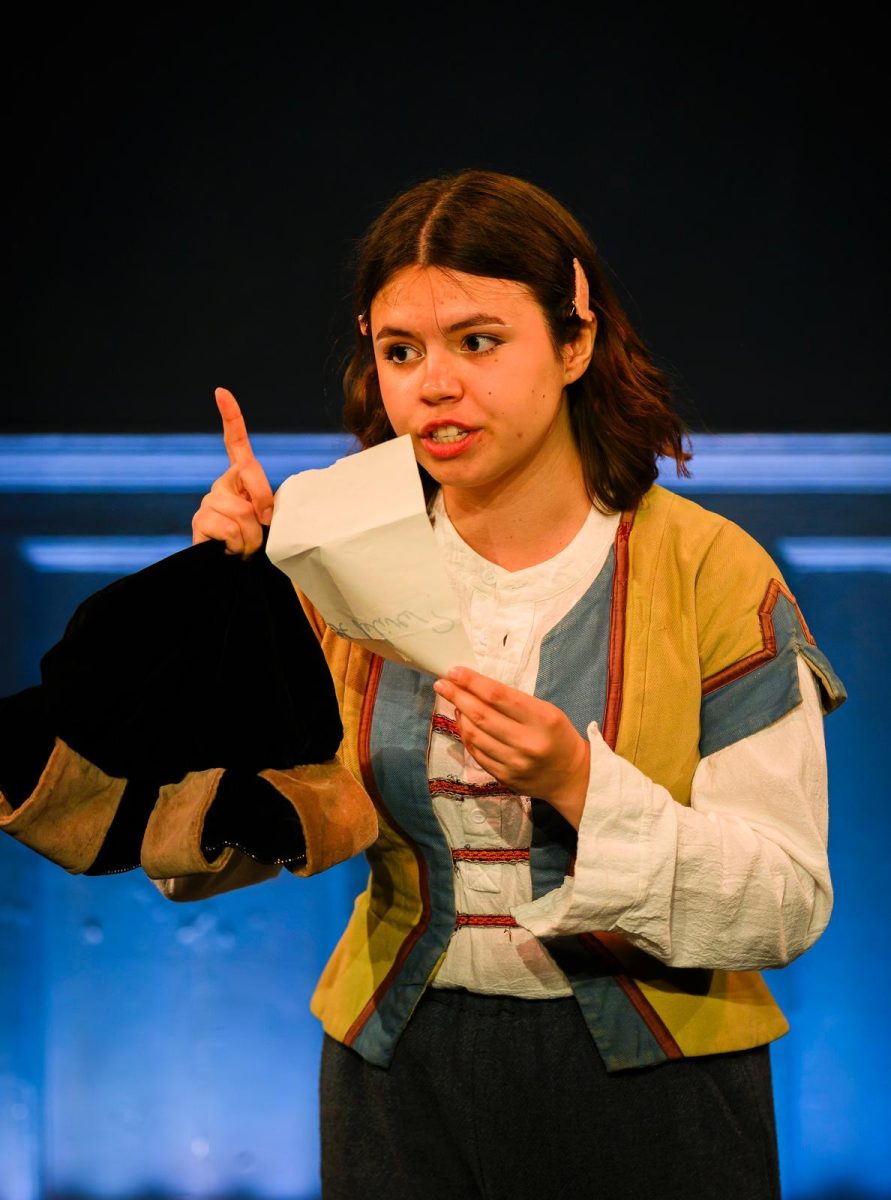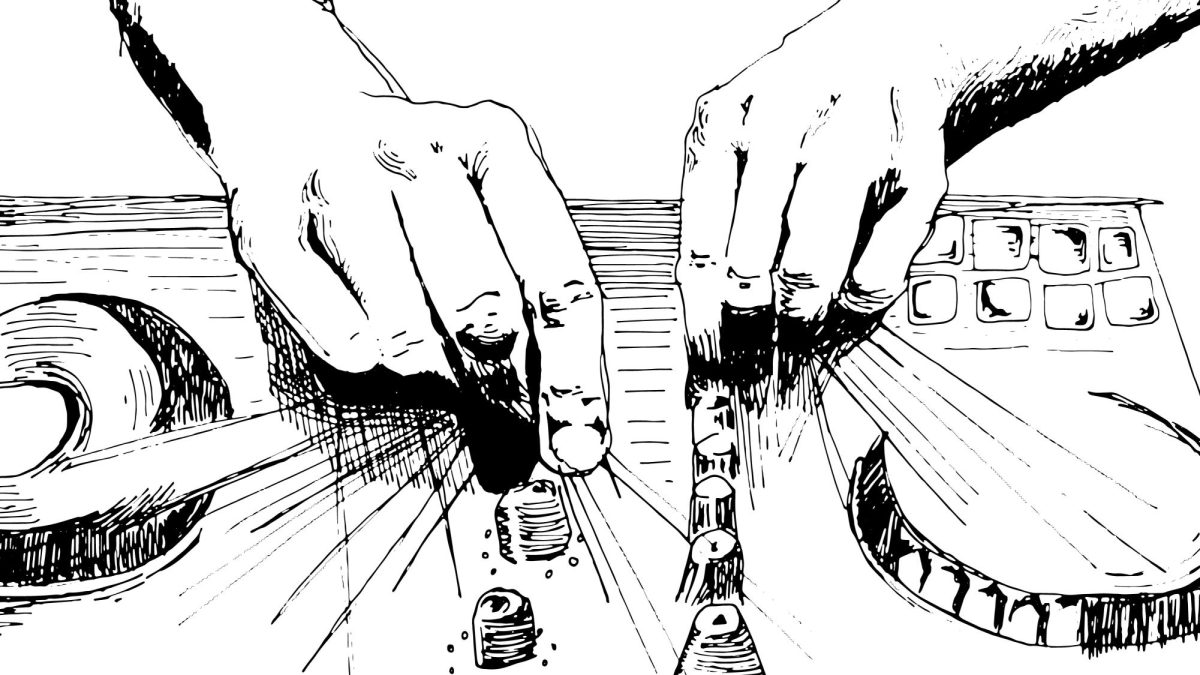On Thursday, Ivorian American artist Marvin Touré visited campus to speak about his unique style and personal artistic growth in Lawrence Hall. Touré originally intended to study architecture at the Southern Polytechnic State University, but after recognizing his artistic inclinations, he graduated with a bachelor’s degree in New Media Arts and ultimately receiving a master’s in fine arts from The School of Visual Arts.
Touré’s artistic endeavors are greatly influenced by his childhood in Georgia, and many of his projects touch on the powerful significance of these foundational years. “Creativity is a refuge” for Touré, but his work also sparks conversation in its viewers, blending the imaginative with difficult subject matter; Touré expressed that he intends to “bring people in with conversation and have people engage in a conversation that they do not necessarily want to have.” As Touré took the audience through his artistic journey, he moved the audience through the three topics of his artwork thus far: “The Weaponized Mind,” “The Thought Process” and “Consciousness.”
The first topic, “The Weaponized Mind,” focused on Touré’s personal experience growing up as a “young black mind in America,” and Touré’s work in this series provoked the audience to consider the question, “what does it mean to raise a child for battle?” Touré displayed his distinctive chess “battlefield” sculpture and he related the work to his childhood development of his own “Weaponized Mind.” Touré reflected on what he learned from the militant perspective of his father, growing up “hyperaware of drug culture,” and he expressed that he was “raised to be in conflict your whole life.” Growing up in Georgia, Touré learned that the battle against racism and discrimination “can be real,” and he described the transformative experiences of having the “police conversation” at a very young age.
Touré shifted to his second topic, “The Thought Process” and he noted the personal emotive relationship between this project and his own life. The project “examines the intricacies of microaggressions” in his educational and workplace environments through a blank crossword puzzle. The clues of the crossword puzzle were statements made by professors, students, alumni and other artists when observing his work many forms, and the answers to each statement were the names of the individual. The project spanned across Touré’s first and second year in graduate school, and within the second year, the crossword reflected the aggressive and blatant attacks of racism that he experienced in response to the first crossword. The responses were vulgar and shocking to the audience viewing the project, but the forceful effect of the exposure was tangible.
After this troubling artistic experience, Touré expressed that he “needed to breathe, think differently, while having fun talking about issues that matter.” In this pursuit in 2016, Touré created his “Mad Conqueror: PTSD of a Young Atlanta N****” piece, which was an exploration of his “best and worst self through the lens of western ideals.” Touré explained that these ideals in connection to the destructive “talk on what it means to be a black man in terms of black male sexuality” and other identity expectations. This conversation was brought to life through the use of typically “innocent objects and text to talk about intense subject matter,” and this was exhibited in the action figure characters and comic book imagery created based off Touré’s experiences with racism. Within this, Touré discussed the obstructive nature of negative self-talk and the importance of mental health in connection to discrimination.
Touré’s next exploration described, “{Fig. 27} the {X} Mutation” provoked the audience to address the question, “what if our emotions manifested as physical mutations?” Touré powerfully asked the audience to consider, “what would you look like at 100?” if you “grew an arm every time you hurt someone you loved” or a “golden lock of hair every time you fell in love.” The work’s dark nature touches on the “intersection of black and human emotion,” and it exhibits the notion of “black” as “a reflective space for truth to exist.” The “mutated creatures” were created from an assortment of materials such as shells, crochet thread and crystals, and they materialize personal identity.
Touré’s final project discussed, “Consciousness,” furthered the notion of “black as the quiet reflective space for truth to exist” through installations of playhouse buildings into the woods. These playhouses represent naivety within imagination, and Touré described that they “could be anything.” Touré described this as his “most intuitive” project – the playhouses represented an access point for his childhood innocent foundation. Touré “littered” the playhouses with small white figures throughout, and he asked the question, “what happens when these places end up being tainted by reality?” For Touré, the figures touched on racialized paranoia, he explained that he continuously asked himself, “what does paranoia mean to me?” Touré described the cast platter white figures as “imperfect,” almost like “off-cast action figures,” and that they represented a somewhat “broken” identity.
Touré’s lecture artfully took the audience on his journey as a black man in white-dominated environments in connection to his creative development, and his captivating pieces’ demands for awareness and change regarding race relations in America today. Touré exemplified the ability of art to access emotive individuality while also connecting to widespread sentiments, and he left the Williams audience in awe of his creative power.







